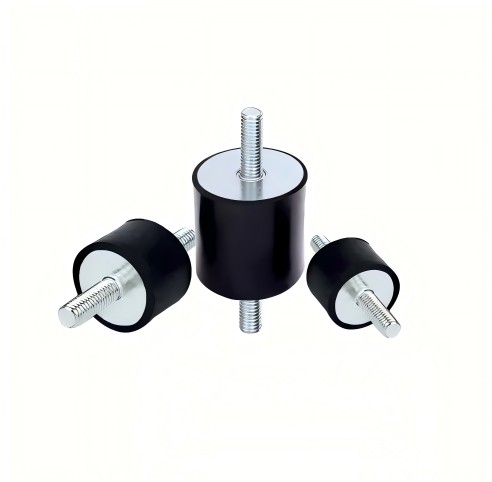As a key vibration-damping element, rubber shock absorbers are widely used in all kinds of machinery, automobiles, railroad locomotives, water transportation vehicles, aircraft and other aircraft. With its excellent damping performance and diversified designs, rubber shock absorber becomes an ideal choice for solving vibration and noise problems. This product is made of high-quality rubber material, and through precise design and manufacturing, it ensures excellent vibration damping effect in various complex environments.
Product Characteristics
High elasticity and viscoelasticity: Rubber material has high elasticity and viscoelasticity, which can effectively absorb and disperse the vibration energy and reduce the vibration and noise of the equipment during operation.
Large elastic deformation: Compared with steel material, rubber has large elastic deformation and small elastic modulus, which can adapt to a wider range of vibration frequency and amplitude.
Excellent impact performance: the impact stiffness of rubber is greater than the dynamic stiffness, and the dynamic stiffness is greater than the static stiffness, this characteristic is conducive to reducing the impact deformation and dynamic deformation, to protect the equipment from damage.
Freedom of customization: the shape of the rubber shock absorber can be freely selected, and the hardness can be adjusted through the formulation design to meet the requirements of different directions and stiffness.
Good damping performance: the stress-strain curve is an elliptical hysteresis line, which can convert the vibration energy into thermal energy consumption, effectively attenuating vibration.
Easy to install and maintain: rubber shock absorber has no sliding part, easy to install and dismantle, and easy to maintain, reducing the cost of use.
Product types and applications
Automotive field: used in engine, suspension system, exhaust system and other parts, effectively reduce vibration and noise during traveling.
Railroad locomotives: used in track mats, locomotive suspension, etc., to improve the smoothness and comfort of driving.
Water transportation tools: Ship host, auxiliary engine and other equipment vibration damping, to protect the navigation safety.
Aviation: vibration damping devices for airplanes and other aircraft to ensure stability during flight.
Mechanical equipment: vibration isolation and noise control of high-frequency rotating mechanical equipment such as fans, pumps and generator sets.

